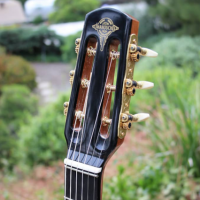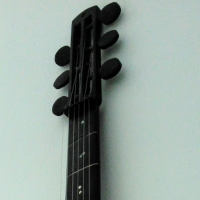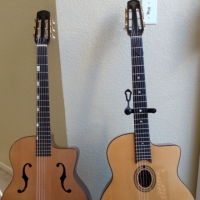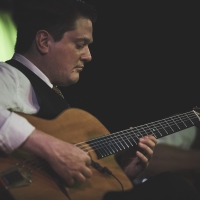DjangoBooks.com
Welcome to our Community!
Categories
- 20K All Categories
- 1.1K General
- 476 Welcome
- 59 Archtop Eddy's Corner
- 146 CD, DVD, and Concert Reviews
- 384 FAQ
- 26 Gypsy Jazz Italia
- 26 Photos
- 202 Gypsy Picking
- 21 Unaccompanied Django
- 15 Pearl Django Play-Along Vol.1
- 17 Gypsy Fire
- 45 Gypsy Rhythm
- 1.4K Gypsy Jazz University - Get Educated
- 130 Gypsy Jazz 101
- 224 Repertoire
- 218 History
- 707 Technique
- 51 Licks and Patterns
- 6 Daniel Givone Manouche Guitare Method Users Group
- 20 Eddie Lang Club
- 1.3K Gypsy Jazz Gear
- 801 Guitars, Strings, Picks, Amps, Pickups and Other Accessories
- 457 Classifieds
- 49 Recording
- 62 Other Instruments
- 18 Violin
- 5 Mandolin
- 22 Accordion
- 7 Bass
- 10 Woodwinds
- 347 Gypsy Jazz Events
- 143 North America
- 109 Europe
- 95 International
In this Discussion
Who's Online (0)
My experiments with Impulse Response (IR) processing - with sound samples!
 V-dub
San Francisco, CA✭✭✭✭
V-dub
San Francisco, CA✭✭✭✭
I've been interested in IR technology for a while now, but haven't seen many samples of its capabilities for acoustic swing and jazz style guitar, which is primarily my focus. The benefit of this over a microphone is the plug-and-play nature of a piezo pickup (ideally a single input jack), and better feedback resistance. However, piezo's tend to sound boxy and "quacky".
The Nux Optima AIR is an affordable acoustic guitar Impulse Response modeling + Preamp EQ pedal. It can transform the sound of your piezo pickup into something much closer to a microphone. You may have heard of the ToneDexter, the first product to do this. Since then, there's been offerings from L.R. Baggs and now Nux.
How do these sorts of pedals work? In short, you program it by playing with both a microphone and your piezo pickup plugged into the pedal simultaneously. It records a sample of both, and calculates an "impulse response" algorithm that will translate your pickup to the frequency profile of the microphone in real time.
I put it to the test with the cheapest piezo I could get off of Amazon. The pickups were stuck on with removable adhesive putty.
For all tests, I played and recorded the same audio in the following order:
- Straight piezo
- Nux Optima Air IR switch enabled, with my own programmed IRs for the instrument
- A condenser microphone (Joemeek JM27 small diaphragm)
- Nux Optima AIR IR again, but with some EQ (boosted highs, lower mids) to try to match the sound of the mic.
Conclusions: I think it's really impressive! But needs some EQ to dial it in. You really do need to put in the time to program your own IRs to get the most out of this. Using the stock ones are not great at all.
You can download the IRs I created here (note you need to cut and paste this URL into your browser, clicking it from this forum doesn't seem to work):
http://www.paniquejazz.com/wp-content/uploads/2022/06/IRs.zip


















Comments
I need to listen to the examples using headphones but it sounds good. I think if I went this route I'd get LR Baggs just because with NUX you still might need a preamp with a notch filter which NUX doesn't have. That and it's a smaller footprint than Tone Dexter. I'm not sure if the others can load third party IRs, so that could work in NUX advantage.
I think this is always going to be a series of trade-offs. As you said, Vic, the condenser mic sounds soooo nice compared to the other options. Even with your altered EQ settings, I still find the IR to sound a little like I am listening with my ear in a paper tube, if that makes sense. So, in a quiet room/concert setting, you would absolutely gravitate towards the mic to project your truest sound. If you are in a crowded room, that echoey, boxy sound might be harder to discern over the din of the masses. In that case, you've removed the quack and given a good approximation of what you hear with mic minus the risk of feedback. Thanks for sharing this!
With the CB guitar, I gotta say, while the condenser mic is the nicest sound, I actually prefer the flat eq sound of NUX IR, vs the eq-ed. It's darker and lo-fi sound but very pleasant. With eq-ed IR sound there is pronounced mid-range that isn't there with the condenser mic. Maybe that can be eq-ed further but flat eq does the job nicely.
Thanks Vic for doing this!
I use a Tone Dexter and my experiences are similar but I am going to revisit my models after hearing yours. For me a mic is best, for an acoustic sound in a loud room the Tone Dexter (weird I had to spell it out and not use the initials) gives me my best option. Used it recently in both an indoor concert and outdoor concert. Indoor I got a bump on the eq (boxy) that made me wish I had just used a mic. Outdoors in a loud setting it was an ok compromise but probably should have gone magnetic. That said I need to revisit making new models or better ones.
www.scoredog.tv
weird I had to spell it out and not use the initials
Not weird if those initials happen to belong to trade competition.
www.scoredog.tv
I wonder for these if they would work better if you used a better pickup. I would think the less manipulation the IR has to do the more natural it would sound. I have been using an Ischell which sounds much better than a pure piezo, but not as good as a mic.
Joscho Stephan explained at a workshop last year his Tone Dexter Setup and he was really exited about it. He said he played around quite a time before he got the sound to his liking.
And the sound was truly fantastic and natural, but on the other hand,.... he is Joscho Stephan so not 100% sure if it was just the Tone Dexter,....
I don't think it would. These units were designed to model with a mic and piezo specifically. the mic choice and placement are probably the biggest factors. I think some of the boxiness in the modeling is due to mic placement. I would think the closer the mic the better for Gypsy Jazz. A greater distance might be better for a regular acoustic so there feels like there is some space. A lot of experimentation is a good idea.
www.scoredog.tv
Joscho uses his Tone Dexter mixed with permanently installed microphone inside his guitar and the two are blended.
Here is a video of one of my favorite current players demoing how a blended sound of piezo and mic sound (worth a listen)
Headway EDB-1 Preamp Test and Pickup Solutions Comparison - YouTube